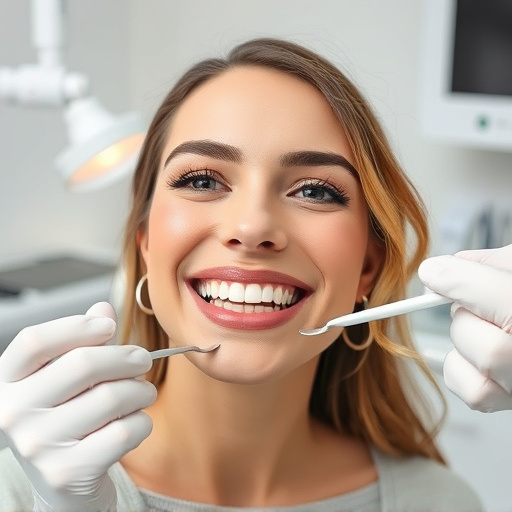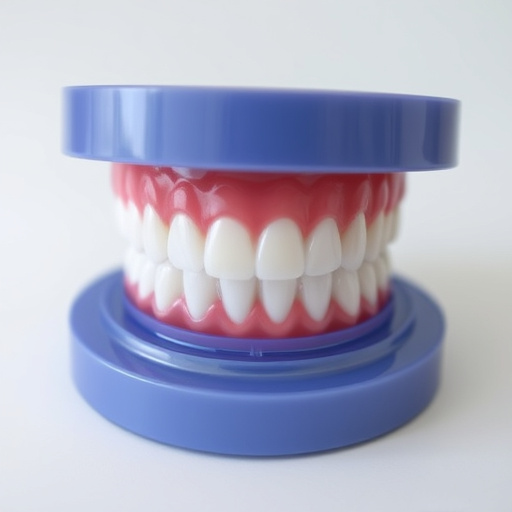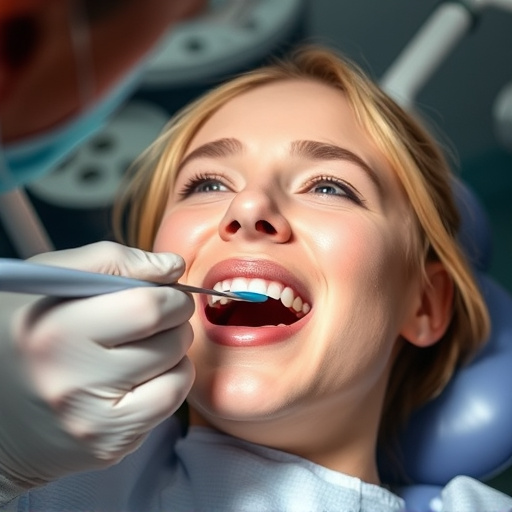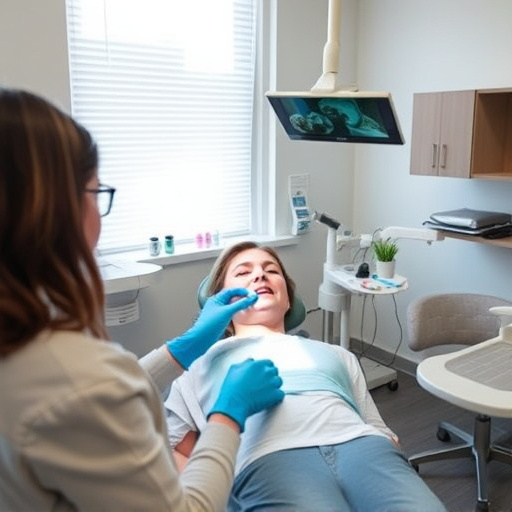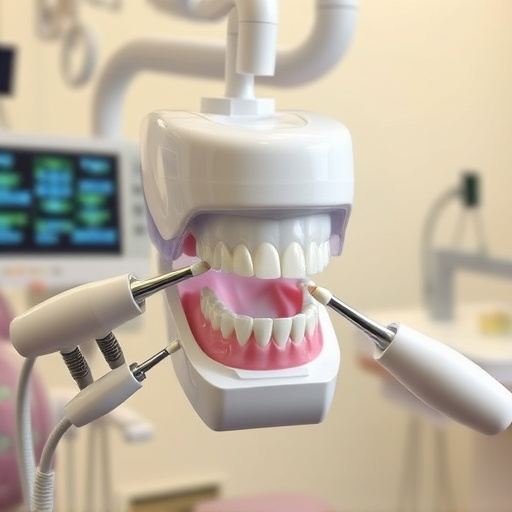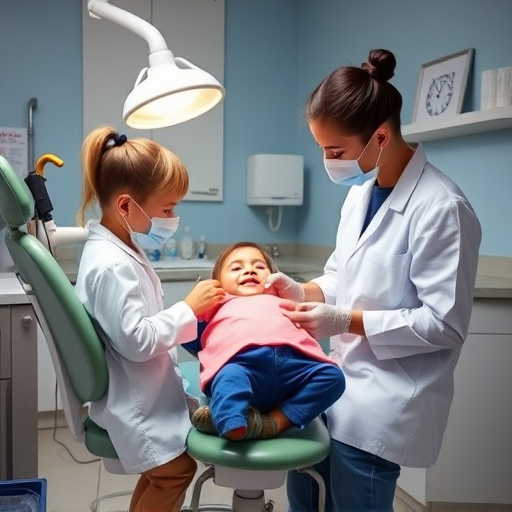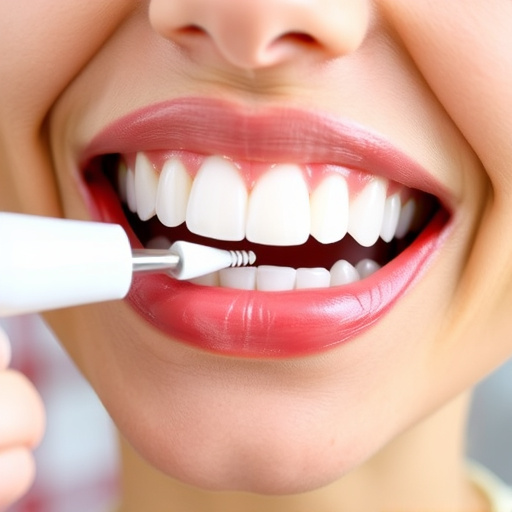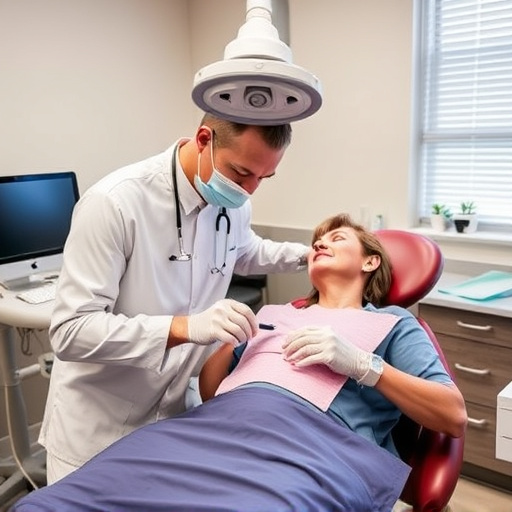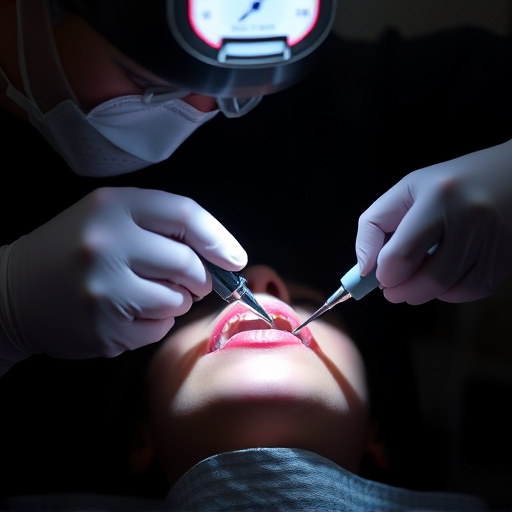Modern orthodontic treatment options include Clear Aligners, invisible, removable trays guiding teeth into alignment, and traditional braces, visible but durable. Choice depends on needs, preferences, and bite issues. Clear Aligners offer discreetness and flexibility, while traditional braces provide precise control and are suitable for complex problems, requiring regular check-ups and strict adherence. Both have unique benefits discussed with dental professionals to select the best orthodontic treatment option.
Choosing the right orthodontic treatment is crucial for achieving a straight, healthy smile. This article delves into two popular methods: clear aligners and traditional braces. Understanding these modern orthodontic approaches offers folks a range of choices. Clear aligners provide a discreet, removable option while braces offer a classic, effective solution. Comparing benefits and considerations helps determine the optimal treatment for individual needs, ensuring a confident, beautiful outcome in the world of orthodontic care.
- Understanding Clear Aligners: A Modern Orthodontic Approach
- Traditional Braces: The Classic Orthodontic Solution
- Comparing Benefits and Considerations for Optimal Treatment Choice
Understanding Clear Aligners: A Modern Orthodontic Approach
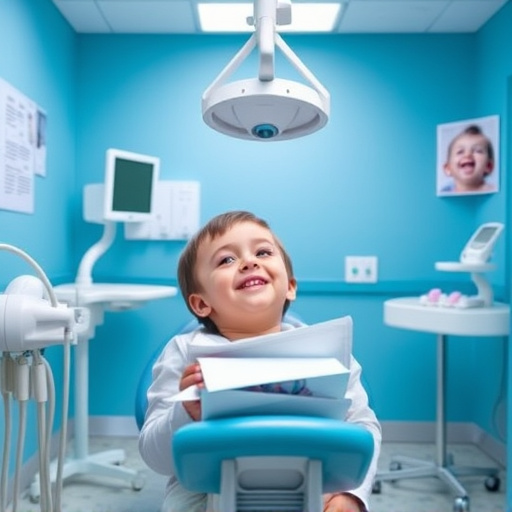
Clear Aligners represent a modern approach to orthodontic treatment, offering an aesthetically pleasing alternative to traditional braces. This innovative method utilizes a series of custom-made, transparent trays that gently guide teeth into their desired positions over time. Unlike metal braces, Clear Aligners are virtually invisible, making them a popular choice for patients seeking discreet solutions for straightening their teeth.
This orthodontic treatment option is not just about aesthetics; it’s also highly effective. Through regular wear, the clear aligners apply gentle pressure, allowing teeth to move gradually into their new alignment. This modern approach aligns with contemporary dental practices that prioritize patient comfort and satisfaction. Moreover, Clear Aligners can be easily removed for eating, brushing, and flossing, making them a convenient choice, especially when considering broader orthodontic treatment options like children’s dentistry and restorative dentistry.
Traditional Braces: The Classic Orthodontic Solution
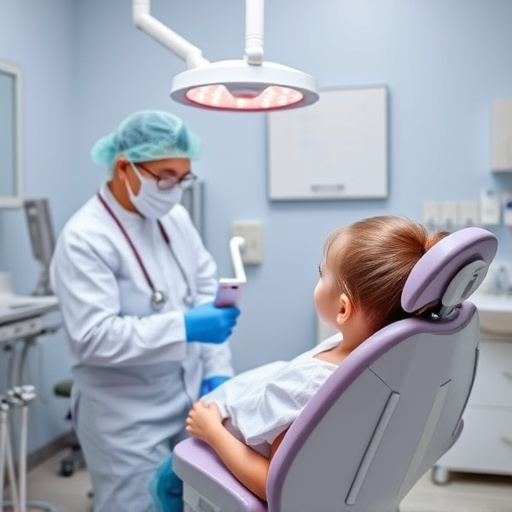
Traditional braces have been a classic solution for orthodontic treatment options for decades. These metal braces involve brackets attached to the teeth, connected by wires that gradually adjust over time to straighten them. This method is effective in addressing various dental issues like crowding, overbite, and underbite. The advantages include their durability and the ability to correct severe misalignments. However, they can be noticeable, causing some individuals to feel self-conscious during treatment.
Compared to other orthodontic treatment options, traditional braces offer a proven track record of success. They are often recommended for complex cases where other methods might not be as effective. General dentistry and preventive dentistry practices include regular check-ups and maintenance to ensure the health and alignment of teeth throughout treatment and beyond.
Comparing Benefits and Considerations for Optimal Treatment Choice

When deciding between clear aligners and braces for orthodontic treatment, understanding the unique benefits and considerations of each option is essential. Clear aligners, like Invisalign, offer a discreet and comfortable solution, ideal for patients seeking an aesthetic alternative to traditional metal braces. They are removable, making it easier to maintain good oral hygiene and allowing for greater flexibility in diet and daily routines. However, they may not be suitable for complex bite issues and can require stricter adherence to wear schedules.
Braces, on the other hand, represent a proven, long-lasting solution for a wide range of orthodontic problems. They provide precise control over tooth movement and are less affected by lifestyle factors or food choices. Often more cost-effective in the long term, braces also facilitate better access for cleaning and preventive dentistry. Yet, their metallic appearance can be a concern for those prioritizing cosmetic dentistry, especially during formative years when self-image is developing.
When deciding between clear aligners and braces for orthodontic treatment, understanding the unique benefits of each is key. Clear aligners offer a discreet, comfortable option with fewer restrictions on diet and oral hygiene. Braces, while requiring more maintenance, provide precise adjustments for severe cases. Considering factors like treatment time, cost, and personal preferences can help patients make an informed choice that aligns best with their desired outcomes, ensuring a confident smile at every stage of life. Orthodontic treatment options thus cater to diverse needs, allowing individuals to select the path most suitable for them.
